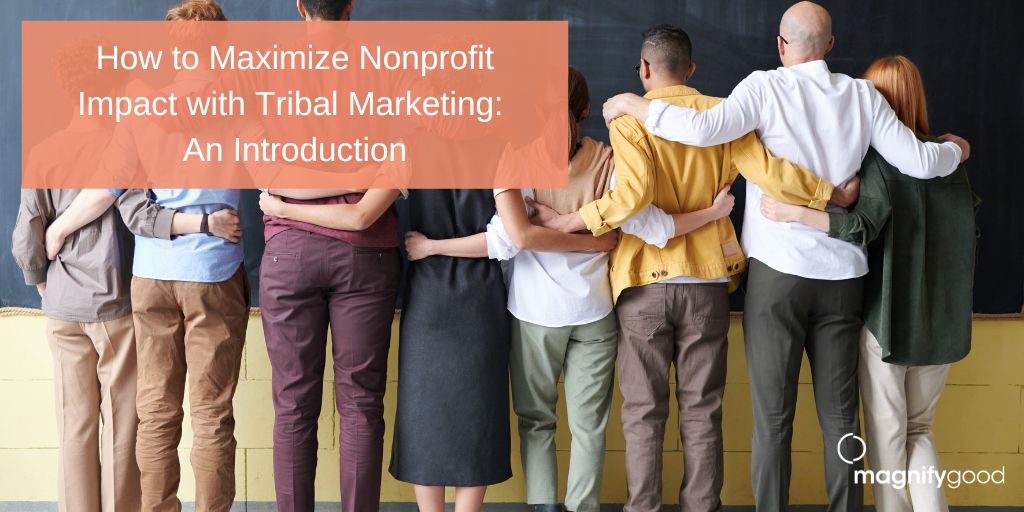- Tribal marketing is a strategy that focuses on creating relationships between a brand and its target audience.
- Using storytelling, shared values, and community engagement, organizations can build loyalty, trust, and long-term engagement with their audiences.
“A tribe is a group of people connected to one another, connected to a leader, and connected to an idea.” – Seth Godin, Tribes.
In today’s competitive market, it is essential for organizations to understand their audience and how to reach them. By targeting audiences based on commonalities rather than demographics, organizations can connect with individuals who better fit the mission and brand. This is called tribal marketing. In its simplest form, tribal marketing is about connecting with an audience on a deeper level and building relationships within the community. Let’s dive deeper into what tribal marketing is and how it can benefit your organization.
What Is Tribal Marketing?
At its core, tribal marketing is about creating a sense of belonging between audiences and organizations. A tribe is a group of people who have common interests, values, beliefs, and memories. And tribal marketing is about identifying, targeting, and developing those tribes that are most likely to want to engage with the organization and its mission. For this, we need to understand audience needs and desires, as well as offer solutions that meet those needs and desires.
Take, for example, a nonprofit animal shelter looking for volunteers. Rather than marketing based on traditional demographics like age or income, seeking out and marketing to animal lovers would be more effective. Their needs may be to feel like they made an impact in helping vulnerable animals. And their desires may be to interact with animals while also interacting with other animal lovers. Once the animal shelter identifies this tribe as a good fit for their mission, they’ll want to start reaching out to them and cultivating a space that builds a sense of belonging, trust, and loyalty to create a positive emotional connection.
This also involves creating content that speaks directly to an audience’s interests and values while providing valuable information or resources they can use in their everyday lives. From podcasts to webinars to blog posts, this content should add value and pique curiosity among the targeted audience. For the animal shelter and their animal lover tribe, this might look like live streams of the animals in the shelter playing, informational blog posts about proper care, or social media posts updating their audience when an animal is adopted.
Cultivating relationships with influencers is another beneficial method in tribal marketing as influencers can help spread awareness of the organization’s mission and message while also providing valuable insight into trends or topics related to the organization’s services. A spotlight on Robert Irwin’s social channels, in this case, would work wonders.
Benefits of Tribal Marketing
One major benefit of implementing a tribal marketing strategy is increased loyalty from individuals who are part of your tribe.
Harley-Davidson is a prime example of this. Through generations of passionate riders and fans, they have developed an incredibly strong identity and community that goes far beyond just selling motorcycles. By cultivating this community and tapping into the emotions, values, and memories associated with it, Harley-Davidson has been able to create powerful campaigns that resonate deeply with their customers. This kind of deep connection makes it easier for customers to connect emotionally with their product, which helps to create loyalty and engagement in their brand.
By developing relationships, organizations are more likely to retain audiences as loyal advocates for longer periods of time because they feel connected to the organization’s mission on an emotional level. This can result in increased word-of-mouth referrals due to positive experiences—which in turn leads to even more potential advocates being drawn in.
Conclusion
Tribal marketing has become increasingly important in today’s competitive and community-driven landscape—and understanding the basics behind this approach is key for any organization looking for sustainable, long-term growth. By focusing on creating strong relationships through valuable content and connecting with community partners, you can foster trust amongst your existing fan base while also expanding reach into new audiences—ultimately leading to increased loyalty overall.
To learn how your organization can identify potential tribes, click here to go to the next part in our series.



